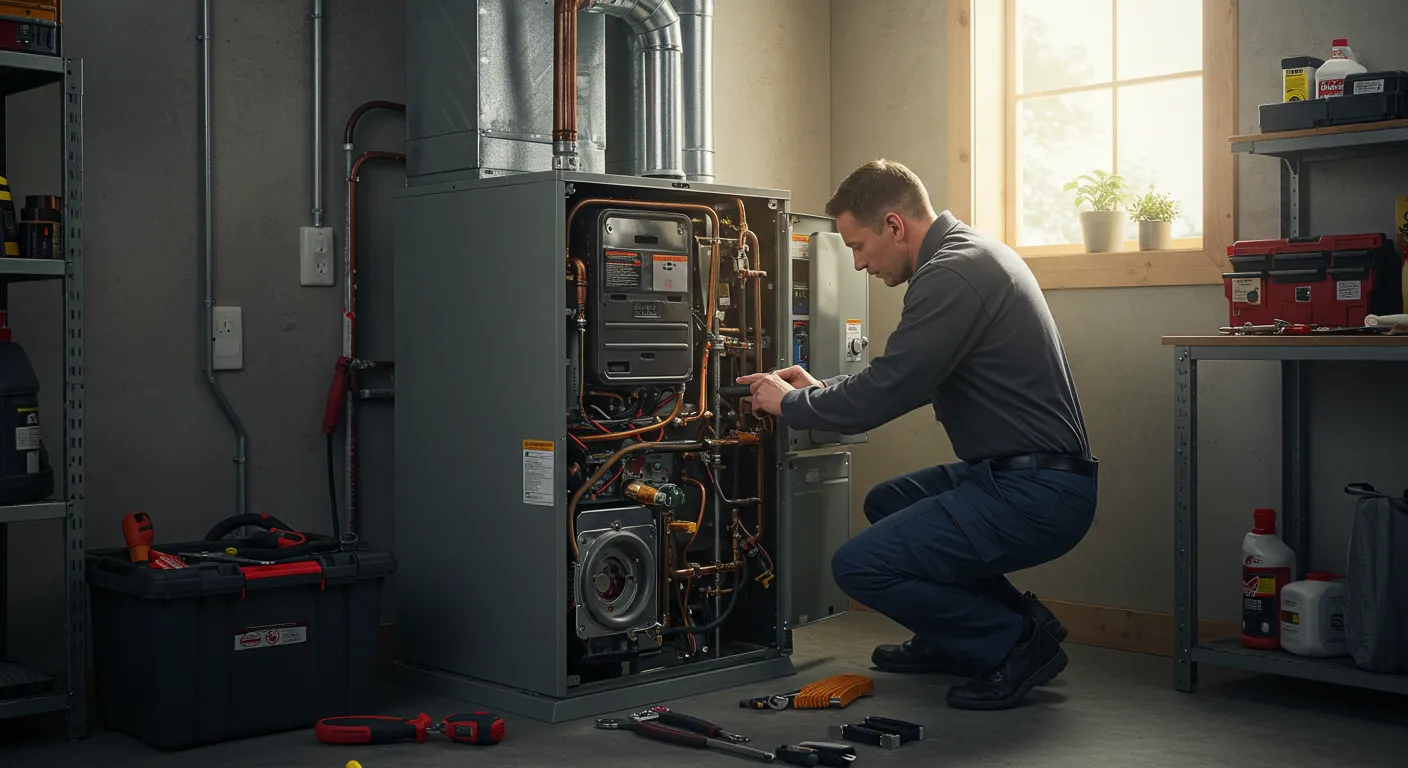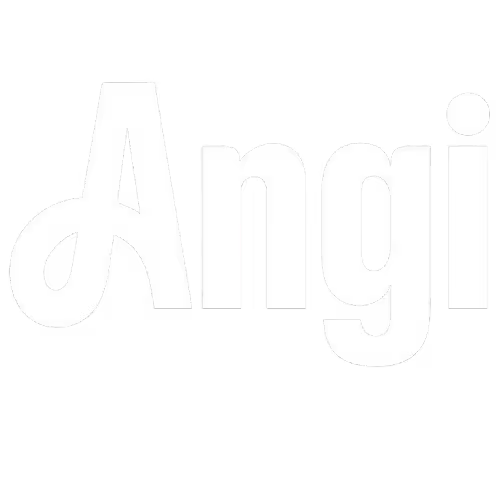
Expert Heating Installation for Optimal Home Comfort in Crystal, MN
A reliable and efficient heating system is essential for any home, especially during colder months. Investing in a new heating installation is a significant decision that impacts your comfort, energy consumption, and overall home value for years to come. At Stafford Home Service, we understand the complexities involved in selecting and installing the ideal heating solution for your unique needs. At Stafford Home Service, our comprehensive service ensures a seamless process from initial consultation to the final successful operation of your new system, guaranteeing lasting warmth and efficiency.
Whether you're replacing an aging furnace, upgrading to a more energy-efficient model, or installing a brand-new system in a new construction, the right professional guidance makes all the difference. We specialize in providing tailored heating solutions designed to meet the specific demands of your property, ensuring optimal performance and cost-effectiveness.
Exploring Types of Heating Systems
The landscape of home heating offers a variety of technologies, each with distinct advantages. Understanding your options is the first step toward making an informed decision for your heating installation:
- Furnaces (Forced-Air Systems): These are common in many homes, using a blower to distribute heated air through ductwork. They can be powered by natural gas, propane, oil, or electricity. Gas furnaces are often praised for their rapid heating and relatively low operating costs where natural gas is available. Electric furnaces are quieter and easier to install, though often more expensive to operate depending on electricity rates.
- Boilers (Hydronic Systems): Boilers heat water which is then circulated through pipes to radiators, baseboard heaters, or radiant floor systems. They provide a gentle, even heat and are known for their quiet operation and superior indoor air quality as they don't circulate dust and allergens. Boilers can use natural gas, propane, or oil as fuel.
- Heat Pumps: An increasingly popular choice for their exceptional energy efficiency, heat pumps operate by transferring heat rather than generating it. In winter, they extract heat from the outside air or ground and move it indoors. In summer, the process reverses for cooling. Air-source heat pumps are common, while geothermal heat pumps offer even greater efficiency by using stable ground temperatures.
- Ductless Mini-Split Systems: Ideal for homes without existing ductwork or for specific zones, mini-splits consist of an outdoor compressor unit and one or more indoor air-handling units. They offer precise temperature control for individual rooms or areas, combining heating and cooling capabilities efficiently.
Each system has its own set of considerations regarding initial cost, operating efficiency, and suitability for different climates and home structures. Our experts at Stafford Home Service can help you evaluate these options to find the perfect match.

The Detailed Heating Installation Process
A professional heating installation involves a series of critical steps to ensure your system operates safely, efficiently, and effectively for years to come:
- Initial Assessment and Consultation: Our process begins with a thorough evaluation of your home's heating needs. We consider factors like your home's size, insulation, window efficiency, existing ductwork (if any), and your specific comfort preferences and budget. This step helps us recommend the most appropriate system type and size.
- System Design and Sizing: Based on the assessment, we precisely calculate the heating load requirements for your property. Proper sizing is crucial; an undersized system will struggle to heat your home, while an oversized system will cycle too frequently, leading to inefficiency and premature wear.
- Removal of Old System (If Applicable): If you're replacing an existing heater, our technicians will carefully and safely disconnect and remove the old unit, ensuring proper disposal of all components.
- Ductwork or Piping Installation/Modification: For forced-air systems, we inspect, repair, or install new ductwork to ensure optimal airflow. For hydronic systems, we manage the piping and radiator/baseboard setup. This stage is critical for even heat distribution.
- Unit Placement and Connection: The new heating unit is carefully positioned and securely connected to fuel lines (gas, oil), electrical wiring, and the thermostat. All connections are made in strict adherence to local codes and manufacturer specifications for safety and performance.
- Testing and Calibration: Once installed, the entire system undergoes rigorous testing. We calibrate the thermostat, check for proper airflow or water circulation, verify combustion efficiency, and ensure all safety controls are functioning correctly.
- Client Walkthrough and Education: Finally, our technicians will walk you through the operation of your new heating system. We'll explain how to use the thermostat, discuss basic maintenance tips, and answer any questions you may have, ensuring you are comfortable and confident with your new installation.
Understanding Installation Costs
The cost of a new heating installation can vary significantly based on several factors. While we do not provide exact pricing here due to the custom nature of each project, understanding these variables can help you prepare:
- Type and Brand of Heating System: High-efficiency models or specific brands often have a higher upfront cost but can offer substantial long-term savings on energy bills.
- Home Size and Layout: Larger homes or those with complex layouts may require more powerful systems or extensive ductwork/piping, influencing the overall cost.
- Existing Infrastructure: If your home requires new ductwork, gas lines, or electrical upgrades, these additions will contribute to the total investment.
- Labor Costs: Professional installation by certified technicians ensures safety, compliance, and warranty validity, which is factored into the service cost.
- Permits and Inspections: Many heating installations require permits and inspections to ensure adherence to local building codes, which are included in the overall project scope.
While the initial investment in a new heating system can be substantial, it's an investment in your home's comfort, efficiency, and value. Upgrading to a modern, high-efficiency system can lead to significant reductions in your monthly energy bills.
Choosing the Right System for Your Home
Selecting the ideal heating system involves more than just picking a brand. Consider these key factors:
- Home Size and Layout: Larger homes or those with multiple zones may benefit from systems with greater capacity or zone control capabilities.
- Climate: The severity of your local winters will influence the heating capacity required.
- Energy Efficiency Goals: If reducing your carbon footprint and energy bills is a priority, high-efficiency furnaces, boilers, or heat pumps are excellent choices.
- Budget: Balance your upfront investment with long-term operating costs and potential energy savings.
- Fuel Availability: Access to natural gas, propane, or oil will narrow down your system choices.
- Environmental Impact: Consider systems with lower emissions or those that utilize renewable energy sources.
Professional vs. DIY Installation
While some homeowners are adept at tackling home improvement projects, heating installation is unequivocally a job for certified professionals. The complexities involved in proper sizing, handling fuel lines, electrical connections, and ensuring compliance with safety codes are immense.
- Safety Risks: Incorrect installation can lead to dangerous situations, including gas leaks, carbon monoxide poisoning, or electrical fires.
- Efficiency Problems: Improper sizing or faulty connections can severely impact system efficiency, leading to higher energy bills and reduced comfort.
- Warranty Invalidity: Most manufacturers' warranties require professional installation to remain valid.
- Code Compliance: Professional installers are knowledgeable about local building codes and obtain necessary permits, ensuring your system is installed legally and safely.
Entrusting your heating installation to experts like Stafford Home Service guarantees peace of mind, knowing that your system is installed correctly, safely, and efficiently.
Maintenance and Care Post-Installation
Even after a professional heating installation, regular maintenance plans are crucial to ensure the longevity and efficiency of your new system. Adhering to manufacturer-recommended service schedules, typically an annual tune-up, helps identify minor issues before they become major problems, keeps your system running at peak performance, and extends its lifespan.
A new heating system represents a significant investment in your home's comfort and efficiency. With Stafford Home Service, you gain a partner committed to providing superior heating installation services. Our experienced technicians deliver meticulous workmanship, ensuring your system performs optimally from day one.
To explore the best heating installation options for your home and ensure year-round comfort and energy efficiency, consider speaking with an expert.
Upgrade Your Comfort with Professional Heating Installation Today
Don’t let the cold Minnesota winters catch you unprepared—trust Stafford Home Service to deliver a seamless, reliable heating installation that keeps your home warm and efficient for years to come. Our certified experts handle every detail, from assessment to final walkthrough, so you can enjoy peace of mind knowing your system is installed with precision and care. Contact us today to schedule your consultation and discover the perfect heating solution for your Crystal home.
Maintenance plan
Our premium maintenance plans start at just $216 annually, providing regular tune-ups, priority scheduling, and comprehensive protection to keep your systems running efficiently year-round.
Customer Testimonials
Our customers consistently praise our knowledgeable technicians, prompt service, and the lasting quality of the work we deliver.






